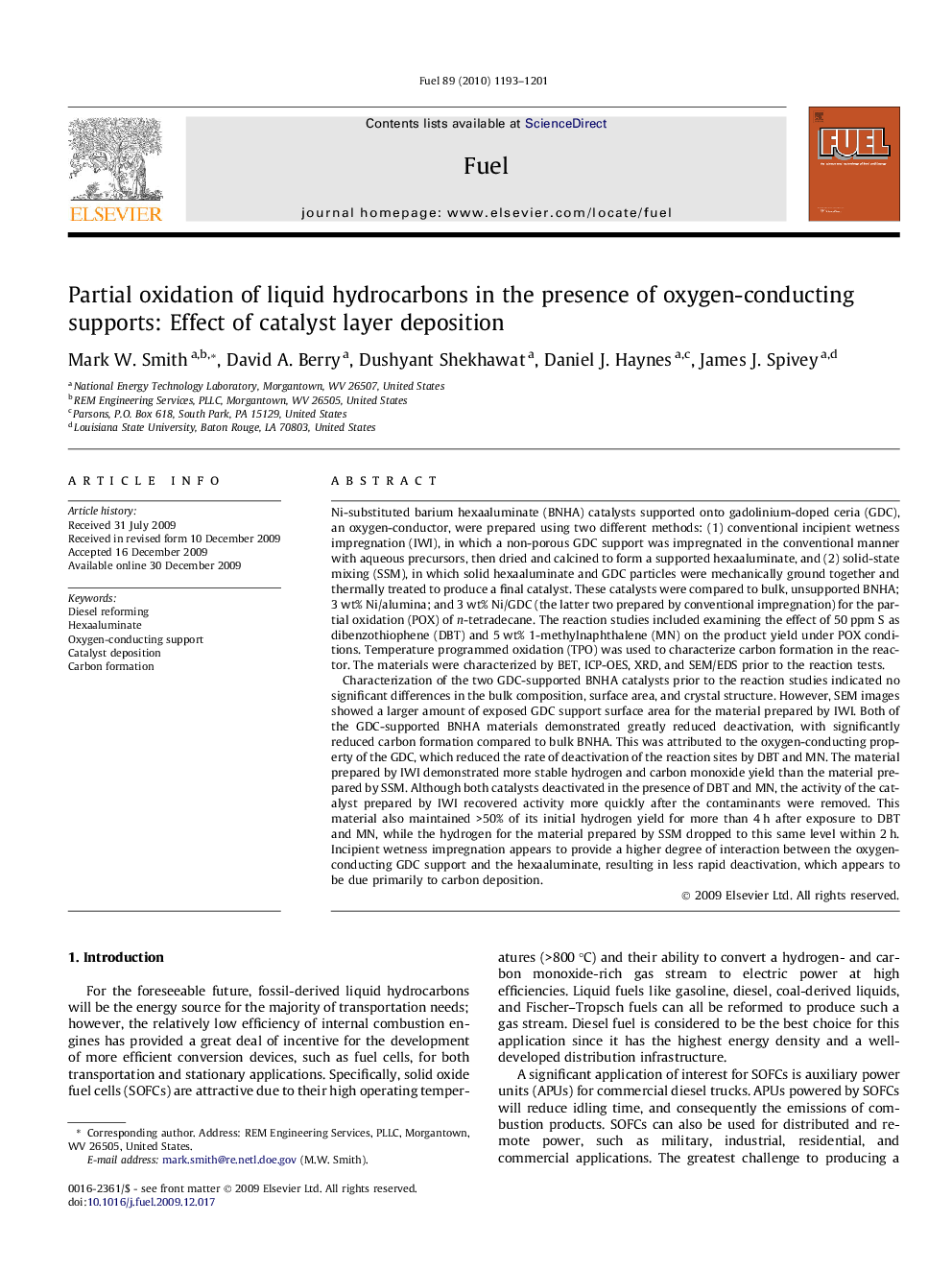| کد مقاله | کد نشریه | سال انتشار | مقاله انگلیسی | نسخه تمام متن |
|---|---|---|---|---|
| 207234 | 461210 | 2010 | 9 صفحه PDF | دانلود رایگان |

Ni-substituted barium hexaaluminate (BNHA) catalysts supported onto gadolinium-doped ceria (GDC), an oxygen-conductor, were prepared using two different methods: (1) conventional incipient wetness impregnation (IWI), in which a non-porous GDC support was impregnated in the conventional manner with aqueous precursors, then dried and calcined to form a supported hexaaluminate, and (2) solid-state mixing (SSM), in which solid hexaaluminate and GDC particles were mechanically ground together and thermally treated to produce a final catalyst. These catalysts were compared to bulk, unsupported BNHA; 3 wt% Ni/alumina; and 3 wt% Ni/GDC (the latter two prepared by conventional impregnation) for the partial oxidation (POX) of n-tetradecane. The reaction studies included examining the effect of 50 ppm S as dibenzothiophene (DBT) and 5 wt% 1-methylnaphthalene (MN) on the product yield under POX conditions. Temperature programmed oxidation (TPO) was used to characterize carbon formation in the reactor. The materials were characterized by BET, ICP-OES, XRD, and SEM/EDS prior to the reaction tests.Characterization of the two GDC-supported BNHA catalysts prior to the reaction studies indicated no significant differences in the bulk composition, surface area, and crystal structure. However, SEM images showed a larger amount of exposed GDC support surface area for the material prepared by IWI. Both of the GDC-supported BNHA materials demonstrated greatly reduced deactivation, with significantly reduced carbon formation compared to bulk BNHA. This was attributed to the oxygen-conducting property of the GDC, which reduced the rate of deactivation of the reaction sites by DBT and MN. The material prepared by IWI demonstrated more stable hydrogen and carbon monoxide yield than the material prepared by SSM. Although both catalysts deactivated in the presence of DBT and MN, the activity of the catalyst prepared by IWI recovered activity more quickly after the contaminants were removed. This material also maintained >50% of its initial hydrogen yield for more than 4 h after exposure to DBT and MN, while the hydrogen for the material prepared by SSM dropped to this same level within 2 h. Incipient wetness impregnation appears to provide a higher degree of interaction between the oxygen-conducting GDC support and the hexaaluminate, resulting in less rapid deactivation, which appears to be due primarily to carbon deposition.
Journal: Fuel - Volume 89, Issue 6, June 2010, Pages 1193–1201